The latest extract from my upcoming book The Body and Leadership, what type are you?
…………..
Types are convenient maps for understanding the infinite variety and richness that exists between people. Types enable us to make sense of our own complexity to build our-self-knowledge and therefore our leadership, also to quickly see how others tend to operate so we can be in relationshi1p to them more effectively. I use types as templates for understanding not heavy-handed reductionist clubs – go easy with others and yourselves before slapping on the labels! Types are about understanding and appreciating differences not putting people in boxes. I often receive resistance from people to typing themselves as they somehow see it as limiting – often there is also a certain amount of ego in thinking one is special, above “dissection with such crude tools” (to quote Hannibal Lector) and people use this to avoid looking at their tendencies. Tendencies of course do not apply to all situations at all times however the reason we have a concept of personality at all is that we are somewhat consistent across situations! In real life people ar
e always somewhere along a continuum with any type – the majority of modern personality psychologists would say that pure types of people do not exist in fact – and they are still very useful day-to-day.
Men and women is one example of an obviously embodied typology! It’s relatively easy to spot the difference from even small embodied cues between the two as transvestite and transgendered friends tell me. It takes huge skill and practice to make this shift convincingly – we constantly give ourselves away with our posture and movement. Gender as an example may seem obvious but think about it, it needn’t be – we could all be the same. There are many ways to gain insight into people’s subtler types using the body as any personality type will always come with a matching physical form – we can’t help but be embodied. There are several advantages to looking at embodied types over traditional psychometrics – the pen and paper tests that psychologists usually use for things like IQ. Embodied typing is quick, cheap and readily accessible – a potential business client, date or mugger is unlikely to want to fill out a form for example. We are all doing these “somatic assessments” unconsciously whenever we meet someone anyway so we may as well become more accurate at it. The best way to do this is to have some good models, understand your own typology as this is at the heart of your leadership style and the lens you will see others’ types through, and then practice guessing others’ types preferably in conversation with them. Respectful “work in progress” guessing is the way I’d recommend looking at this and I’ll talk more about this in the full somatic assessments section in chapter seven.
Varieties of Typology
There is an endless number of ways to categorise the colourful complicated patchwork of humanity. Any set of distinctions is to some extent both artificial and practical, and all “flavours of human” are of course embodied. Having an intimate understanding of two to three typologies – both theoretically and experientially in the body – is very useful for making sense of your own and others behaviour. All typologies almost certainly have both a “nature” and “nurture” component and I’m more interested in how they affect leadership now than this argument about where they come from. Types are however assumed to be long-term and relatively stable, which differentiates them from states, and non-hierarchial (e.g. extroverts are not better or worse than introverts though they may be better suited to some things) which differs from levels. In some ways it doesn’t really matter which typology you make use of as long as it has enough room to make sense of variation, but not so much that you cannot see distinctions easily and use them in an agile fashion. Here are some classic models, some of which draw on distinctions we’ve already established.
Yin and Yang
The simplest typology is to ask is someone more yin or yang? Almost everyone has preference and has gotten good at this way of being over time through practice. See chapter three for more on this as well as Dylan Newcombe’s Uzazu and David Deida’s work on them in regard to attraction and sexuality.
I (self ) We (relationships) and It (task) Orientated Bodyminds
Similarly the embodied preference we have in taking the perspectives of “I”, “we” and “it” are all embodied. Along with yin and yang, a person’s orientation to task, people or their own internal world is one of the first things which usually jumps out at me when I meet someone new and is a simple typology that is useful in helping me get on better with them. Integral Coaching Canada use these plus “its” as a typology for people who are more systems and structures orientated (remember Wilber’s quadrants?), though I have found this last type somewhat rarer than the others.
Ecto/ Endo and Mesomorphic
American psychologist William Sheldon came up with one of the first embodied typologies in the 40‘s which he called “constitutional types” or “somatotypes”. Now somewhat dated it is still an interesting starting point for more sophisticated and reliable modern embodied typologies.
Source: http://wilderdom.com
I would advise using this typology with care. Criticism of Sheldon includes lifestyle factors such as diet and exercise can affect the shape of people (though personality can dictate the lifestyle factors) and how a society’s preconceptions like “the jovial fat man for example, encourage people of a body shape to behave in a particular way. It has however been my experience that there is some basis to Sheldon’s work and I believe that it has been dismissed from academic psychological research prematurely.
There are strong correlation between Sheldon’s types and the ancient Indian Ayurvedic medical system of “doshas” called vata (ectomorpth), kapha (endomorph) and pita (mesomorph). Ayurvedic medicine connects these body forms to such things as diet, sleep patterns and propensity to different kinds of illness. Western medicine has tended to ignore type and is just starting to see how we are not all the same and may need different things to be healthy.
Embodied Myers Briggs / Enneagram
The Myers Briggs Type Innovatory (Myer Briggs or MBTI) is a popular typology dating back to Carl Jung (one of Freud’s main students) and is now used widely in business. My company Integration Training became the first to study it in an embodied way and an early take on this we have since developed is available online. There is too much overlap with the other systems mentioned (especially OCEAN) to include here.
Myers Briggs also has some correlation with the ancient Greek system of the four humours and while few serious researchers today would admit, Jung drew inspiration from my least favourite and perhaps the most abused typology – astrology. I have seen no evidence personal or scientific that this typology is reliable or valid so it will not be included here.
4 Elements
The typology I have decided to use in more detail here is one using the four elements -earth, air, water an fire as labels. 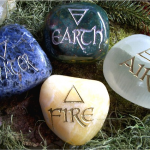 It employs elements of yin and yang, the five pillars, anddirections and emotions related to the six questions. I use the elements as convenientcommonsensical labels and am not suggesting they exist as literal physical elements aspeople in times gone by once did! Four types with intuitive labels is a small enoughnumber for most people to get to grips with and they can then be combined – e.g. “he’s aearth and fire” for more complexity if needed.The table below shows some of the key features of the four elements types.
It employs elements of yin and yang, the five pillars, anddirections and emotions related to the six questions. I use the elements as convenientcommonsensical labels and am not suggesting they exist as literal physical elements aspeople in times gone by once did! Four types with intuitive labels is a small enoughnumber for most people to get to grips with and they can then be combined – e.g. “he’s aearth and fire” for more complexity if needed.The table below shows some of the key features of the four elements types.
Famous Examples of Leadership Types
It is possible to be an exemplary leader with any type, but the manner of the leadership will be very different in each case. Some example of famous leaders will serve to illustrate. As with any type situational factors apply and any effective leader will have at least some range (Margaret Thatcher for example had air, earth and fire qualities for example) so these are simplifications. While we may like or dislike some of the leaders mentioned, remember that not type is good or bad so think of your own examples if you can not relate to any of those mentioned.
http://www.boastl.com/downloads/boas%20Elemental%20Leadership%20article.pdf
Fire Leaders
E.g. Alan Sugar (businessman), John Lennon (musician), Bill Hix (comedian), Adolf Hitler (failed artist), Mike Tyson
Fire leaders are driven, passionate and fierce. They get things done, achieve results and at their worst leave a trail of dead bodies or at least broken relationships in their wake.
Earth Leaders
E.g. Winston Churchill (UK PM and wanna-be artist), Angela Murkel (German chancellor),The Queen, Alan Shearer/ Puyol (footballers)
Earth leaders are stable, reliable grounded types. They can be trusted as a safe pair of hand who will dot the i’s and cross the t’s. The may not be flash or “rock and roll” but they get the job done. At their worse they are stubborn, inflexible and old-fashioned.
Water Leaders
E.g. Richard Branson (Virgin), The Dali Lama (political/spiritual leader), Aung San Suu Kyi (Burmese opposition leader), John Lassater (Disney/Pixar exec)
Water leaders are responsive “servant leaders” who are followed rather than lead from the front in the more “heroic” style, so they are not as obvious as some other types. At their best they listen and respond, at their worst they are pushovers.
Air Leaders
E.g. Ghandi (political/spiritual leader), Steve Jobs (Apple), Marie Curie (scientist), Albert Einstein (scientist), JFK (US President)
Air leaders bring the benefits and pitfalls of thinking, vision and creativity. They may be highly principled, “egg-heads” or great dreamers. On a bad day they can get lost in their high ideals or abstract thinking.
Developing Elemental Sides of Yourself
We have our favourite type or combination there-of and it is worth developing this so it becomes an exceptional leadership strength. It isalso worth developing other sides of ourselves that come less naturally so they do not sabotage us. As well as seeing fire, earth, waterand air as discreet types, they can also be seen as capacities of which we have different degrees of.Any of the following strategies can be used to develop an element within you and improve your leadership. We shall look into establishingpractices in future chapters, enough for now to say that one or a selection of these areas may be suitable and trying to do all of them willprobably be overwhelming! Some are things you can incorporate in daily life (e.g. how you sit), some involve putting aside a little time(e.g. standing in a posture five minutes a day) other larger commitments (e.g. taking up karate). Practice makes permanent. Find what works with you.
Two other areas that are powerful for working with types are music and “mantras”. Music is a way of taking someone’s embodied emotional state, packaging it and transferring it via the ears to another’s body. It should be thought of as a powerful but relatively safe short-medium term dispositional drug.
Further Four Element Practices
I have given a number of areas here where elements how up to get you thinking about how different types live and work, what can be done to build your strengths with each types and how to interact with each type. This list is however not exhaustive, and I encourage you to think and be creative. How might a water types desk look? What language might your learn to build your earth capacity? What kind of art would a fire type make? All four of Wilber’s quadrants are important and while we are focusing on body, psychology, culture and environment are also important so I have mentioned these. It’s where you get the leverage that counts with interventions, be creative, have fun.
Further Investigation
Four elements theories can be found in many traditions East, West and aboriginal and there is a wealth of literature on the subject if you’re interested in exploring more. For a similar embodied perspective on the four elements I would recommend Stuart Heller’s, Francis Briers and Ginny Whitelaw’s work.
OCEAN
The most common personality model used by academic psychologists today is OCEAN which measures a person on “the big five”. Statistical analysis shows that most personality differences can be reduced to these factors.
- Openness – (inventive/curious vs. consistent/cautious). Appreciation for art, emotion, adventure, unusual ideas, curiosity, and variety of experience.
- Conscientiousness – (efficient/organised vs. easy-going/careless). A tendency to show self-discipline, act dutifully, and aim for achievement; planned rather than spontaneous behaviour.
- Extraversion – (outgoing/energetic vs. solitary/reserved). Energy, positive emotions, surgency (confidence and competitiveness), and the tendency to seek stimulation in the company of others.
- Agreeableness – (friendly/compassionate vs. cold/unkind). A tendency to be compassionate and cooperative rather than suspicious and antagonistic towards others.
- Neuroticism – (sensitive/nervous vs. secure/confident). A tendency to experience unpleasant emotions easily, such as anger, anxiety, depression, or vulnerability.
As with all the other typologies, these factors have embodied correlates. I don’t use OCEAN as the primary model in this book as it is too complex, doesn’t come from an embodied or adult development understanding and is less intuitive than using the four elements. I do however include a tentative summary of how this way of looking at personalities is embodied for those familiar with conventional academic psychology and with the hope of stimulating further research in the area.
NB: All variables reversed for low levels, e.g. introverts have less movement.
Rhythmic Types
Any of the preferences for different parts of a rhythm listed in the rest of the chapter can be used as types. For example one could be a “flow” or “staccato” person if you had a preference for this part of Gabriel Roth’s Five Rhythms model.
Stress-Response Types 
Practicing the paired-centring exercises in the last chapter you will have seen already that different people react very differently to pressure. These differences are not random and in fact can be used as indicators of personality and as a typology in their own right. Stress reveals typology beautifully as under pressure we generally revert to what we have practiced the most in order to make ourselves feel safe again. This is one way at defining type in fact – what we have practiced the most so are most inclined to do again if we do not have awareness and intention. On a larger level this can be considered our personality which while we are all greatly attached to, I would take the somewhat Zen view that it is more of a conditioned interface. Anyway, I digress, here are some examples of stress-response types:
- “Towards”, “away from” and “against” are three stress-response patterns that Dr Richard Strozzi-Heckler uses that can be employed as types. Under pressure some people move away from (flight) and some move against (fight) and there is the slightly more sophisticated “towards” pattern where people find safety in social contact and befriending. Which did you do the last time you were under pressure?
- Stanley Keleman an early and influential somatic psychologist used a model of “insults to form” (in addition to Sheldon’s types). These are ways of shaping oneself in as a coping strategy in response to overwhelming threat which then become habitual. The four I have been taught are “dense”, “porous”, “rigid” and “motile”
- The first three are what you would expect from the names and motile means invasive or pushy in this context. How have you formed yourself over the years – are you somewhat resistant and compacted, do you “let it all in”, are you uptight or do you get in other people’s space and take what you want regardless?
- The Hakomi method – a sophisticated system of bodymind psychotherapy – describes eight “safety strategies” labelled: sensitive/withdrawn, dependant/endearing, self reliant/independent, deceptive 1 tough/generous, deceptive 2 charming manipulative, burdened/enduring, possessive/clinging and industrious/ over focused. These are largely how they sound and Ron Kurtz’s work on the subject is worth exploring if how we shape ourselves to keep safe is of interest

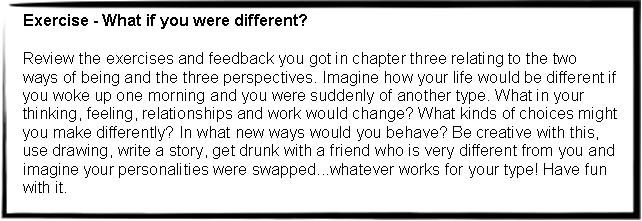
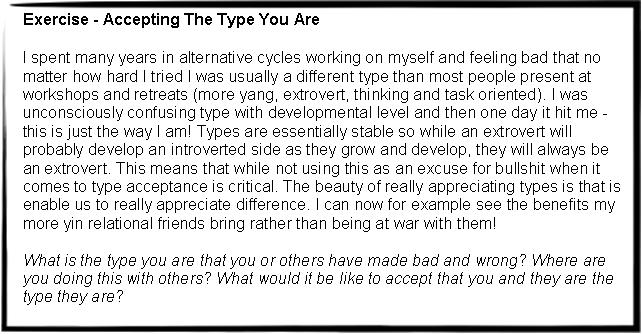
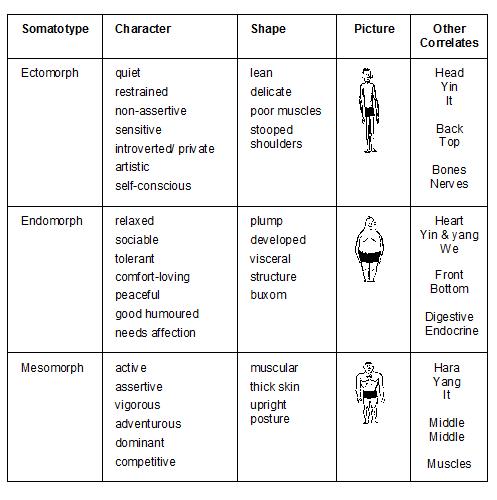

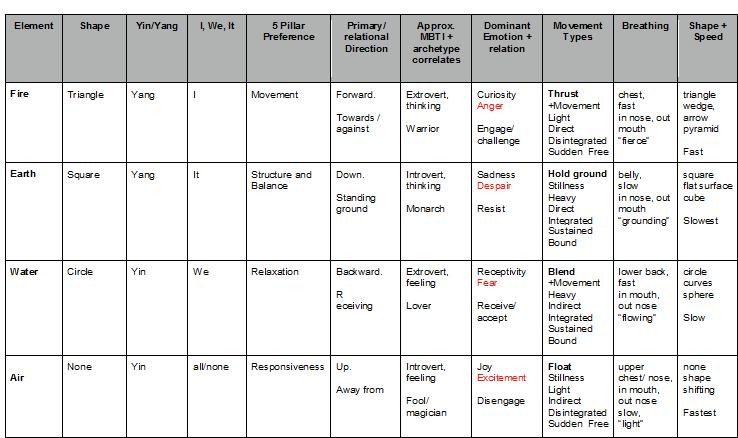
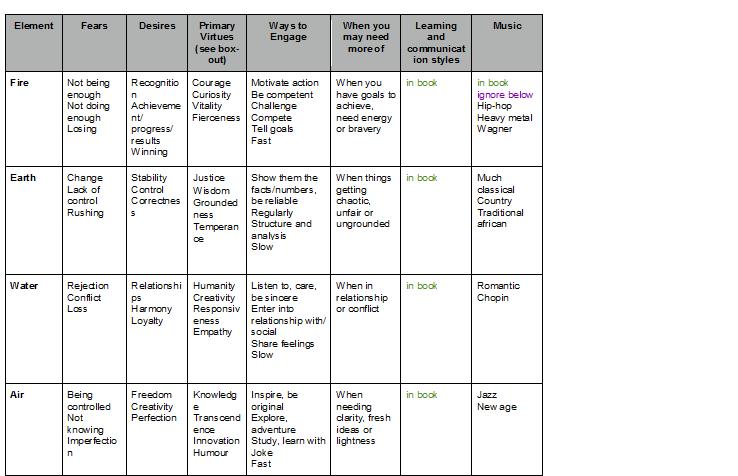

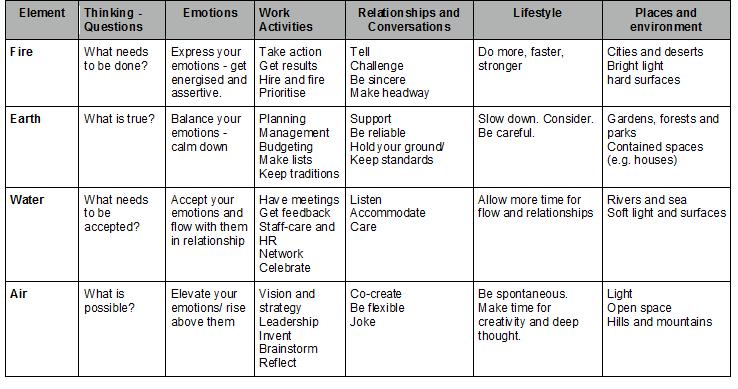
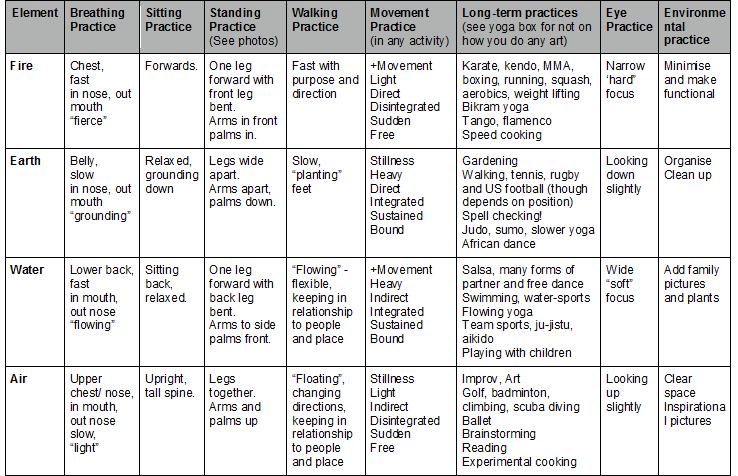
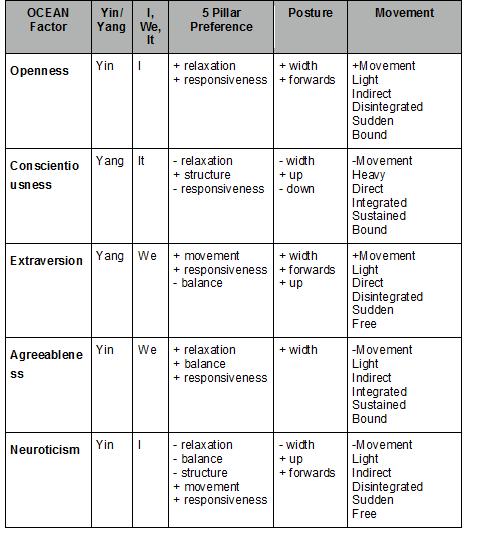

Leadership Development
I am desperately looking for this book. Nice post..
Mark Walsh
It will be out in about 6 months 🙂